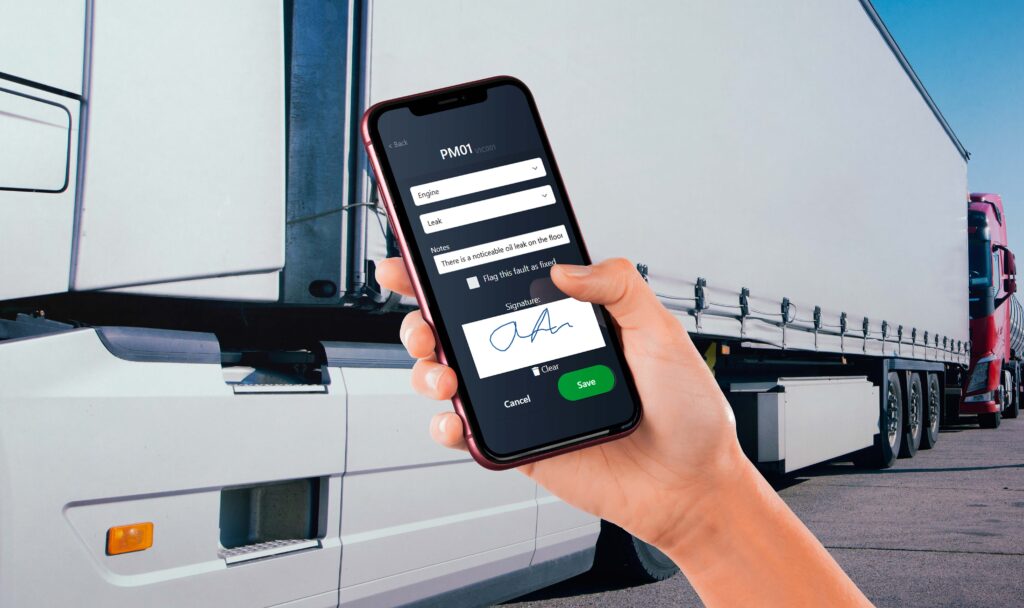Catching faults before they become failures

In fleet operations, things rarely go from fine to broken without warning. There’s almost always a clue – a noise, a vibration, a missed inspection, or a fault noted during a routine check. But unless you have a system in place to catch and act on those clues, they can easily be missed.
That’s where Gearbox makes a real difference.
Faults are the early warning signs
Faults are often small at first: a brake squeal, a cracked hose, a warning light that gets ignored. They don’t shut the vehicle down, but they’re signals. And when those signals aren’t captured and followed up, they grow into bigger problems that cost more to fix and cause more disruption.
Gearbox helps you catch those small issues early, before they become failures.
Where most systems break down
In many fleets, fault reporting is inconsistent. Operators fill out paper forms, or worse, they mention the issue casually and hope it gets logged. A whiteboard might get updated, or someone might jot a note down for the workshop.
But too often, it ends there.
The fault doesn’t get tracked. No one follows up. A busy day turns into a busy week. Then the vehicle breaks down, and everyone scrambles.
How Gearbox changes the flow
Gearbox introduces structure and accountability. Here’s how:
1. Pre-trip faults become logged issues
With the Gearbox Prestart app, operators complete a simple checklist before starting the day. If something fails, a fault report is generated automatically. It includes:
- Description of the issue
- Who reported it and when
- Photos or notes
- Whether it’s a known/repeat issue
It’s no longer “he said, she said.” The fault is now visible and actionable.
2. Faults become work orders (when they need to)
Not every fault needs immediate action, but some do. Gearbox lets managers triage reported issues and turn them into work orders when needed. That includes:
- Assigning to internal teams or contractors
- Setting due dates and priorities
- Tracking completion status
Everything is traceable. Nothing gets lost.
3. Open fault visibility across the system
With Gearbox, faults don’t just sit in someone’s inbox. They’re visible in asset records, jobcards, and dashboards. If an asset has unresolved issues, it’s clear.
4. Review fault history and audit trail
Gearbox automatically builds a full fault history for every asset. From the moment a fault is logged through to resolution, everything is recorded and time-stamped. This gives you:
- A clear audit trail for compliance or internal reviews
- Insight into how long faults take to resolve
- A way to confirm repeat issues are being addressed
Managers can view open and resolved faults across assets, spot recurring problems, and follow up with teams to close the loop. It’s built-in visibility that supports better decision-making and accountability.
Why early detection matters
Catching a $20 hose leak can prevent a $2,000 engine job. Fixing a small air leak now avoids a roadside breakdown later. Acting on a known brake issue protects drivers, equipment, and reputation.
When faults are surfaced early and dealt with properly, the impact is massive:
- Fewer breakdowns
- Lower repair costs
- Improved safety
- Better uptime
- Stronger compliance record
Culture shift: reporting becomes part of the job
With the right tools, reporting faults stops feeling like extra work. The Gearbox Prestart app is fast and straightforward. Drivers and operators don’t need to be mechanics; they just follow the checklist and log what they see.
And when they know those reports actually lead to action, buy-in increases.
Gearbox helps you build a proactive maintenance culture. It’s not about making the fleet perfect, it’s about putting systems in place that catch problems early and act on them consistently.
That’s how you stay ahead of costly failures. That’s how smart fleets run.
